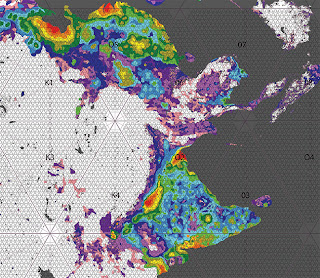
Sanford Kwinter is the Co-Director of the Master in Design Studies Program and Professor of Architectural Theory and Criticism at the Harvard Graduate School of Design. He is a writer and editor who holds a PhD in Comparative Literature from Columbia University. He has taught at MIT, Columbia and Rice universities as well as at the Staedelschule in Frankfurt, the Architectural Association in London, and the Universitat fur Angewandte Kunst in Vienna. He was cofounder and editor of the journal ZONE and Zone Books for 20 years. He has written widely on philosophical issues of design, architecture and urbanism, science and technology and was an editorial member of the ANY conferences and publications in the 1990s as well as of the journal Assemblage. He is the author of over a hundred and fifty articles in a dozen languages. His books include Architectures of Time: Towards a Theory of the Event in Modernist Culture (MIT Press, 2001), Far From Equilibrium: Essays on Technology and Design Culture (Actar, 2008) and Requiem: For the City at the End of the Millennium and the forthcoming Soft Systems on the life sciences and and their impact on design. He writes frequently on the work of young and emerging practitioners in the nascent and transdisciplinary field of experimental spatial practice. He most recently curated a Harvard University-wide exhibition of art, design and the public domain entitled "The Divine Comedy." He is currently at work on a book on paleo-ecology and the origins of form.
Christian Hubert is an educator, architect and writer based in lower Manhattan, whose work walks the border between art and architecture in the exploration of space, light, and material. He is currently an Associate Professor at Parsons the New School of Design. He is the founder of Christian Hubert Studio, which specializes in the design of gallery spaces, artist residences, and art and culture institutions. During the early 1980's he taught at the Institute for Architecture and Urban Studies in New York and was elected to the fellowship of the Institute in 1982. During the same period, he designed lofts for artists including David Salle and Francesco Clemente, as well as several exhibitions at the Whitney Museum. From 1986 to 1995, Mr. Hubert worked and taught in Los Angeles, where he was president of the Los Angeles Forum for Architecture and Urban Design. He has taught extensively on the East and West Coasts of the U.S., as well as in Canada, and his lower Manhattan office serves as an outpost of the PhD Architecture program at the University of Delft. Mr. Hubert received a B.A from Columbia and a M.Arch. from the Harvard Graduate School of Design.
http://www.christianhubert.com
This is an installation of the projected world population density in the next 100 years. It has been modeled by combining all the world cities together as one continuous growth system. As human population expands, we see it as one single macro city spread across the continents. We argue that most nations cannot view the effects of planetary population density thru the lens of just one city or region. Instead we aim to reveal the long range effects of massive human population in areas of present and future urban intensity.
Terreform ONE Board Member,
Marc J. Neveu, Named Executive Editor of the Journal of Architectural
Education.























.JPG)




+copy.JPG)
